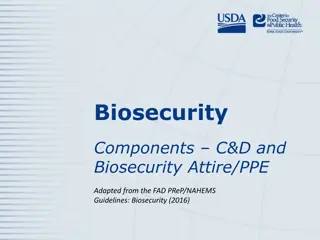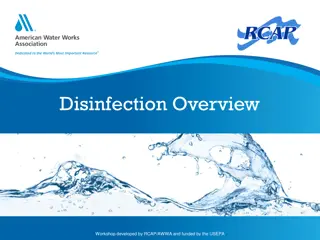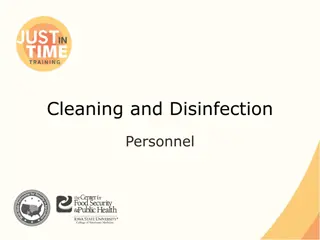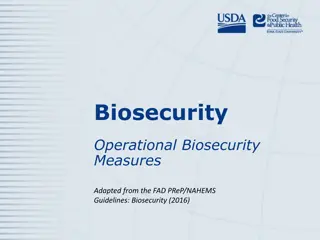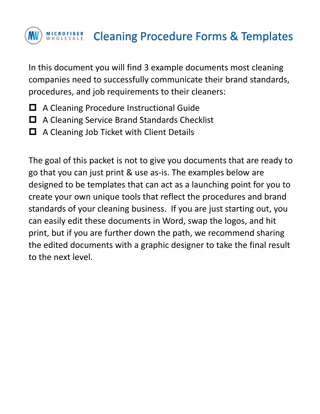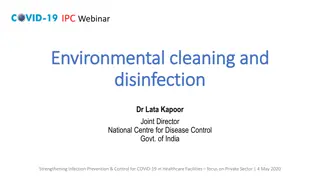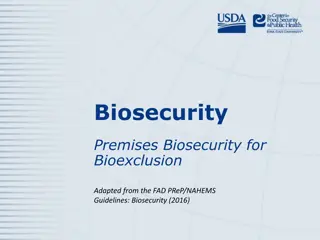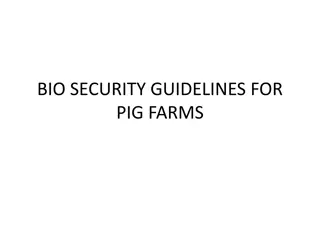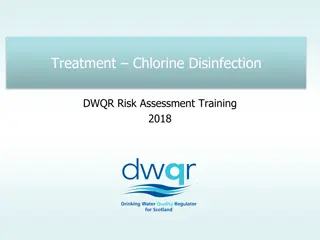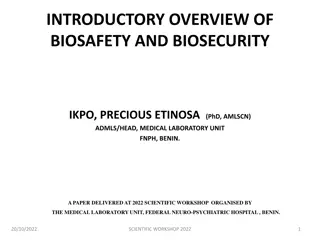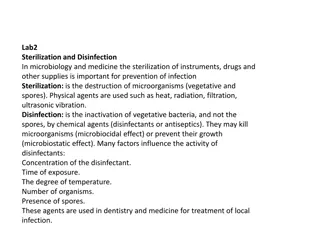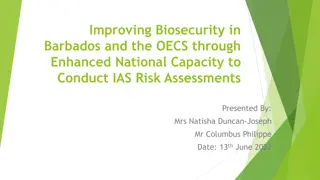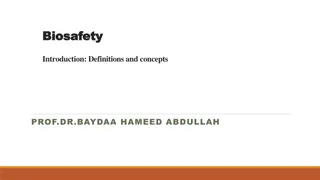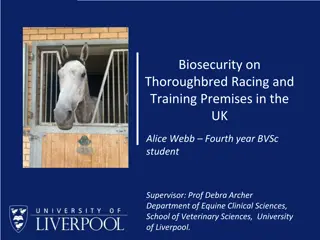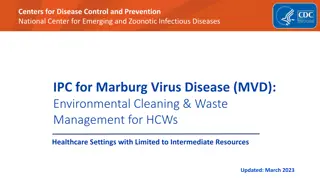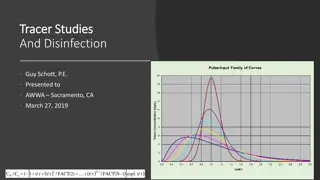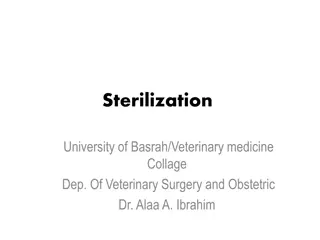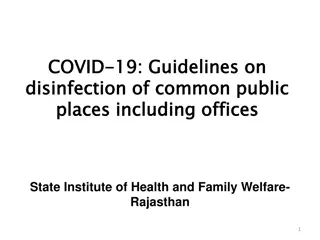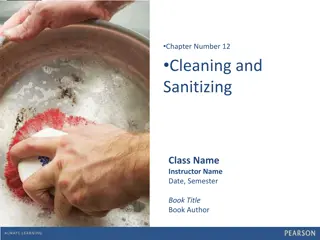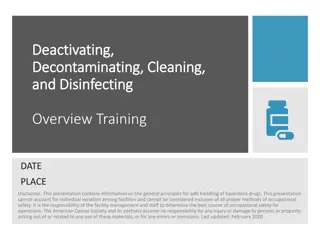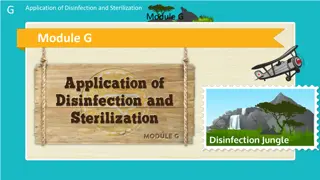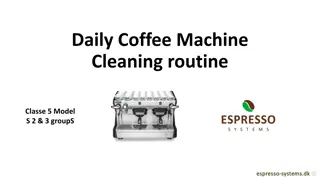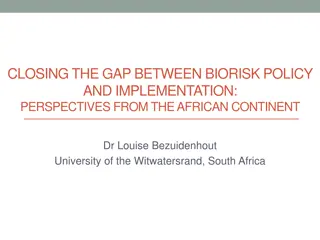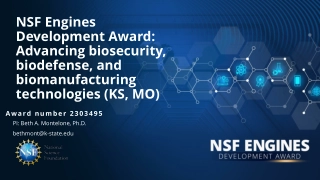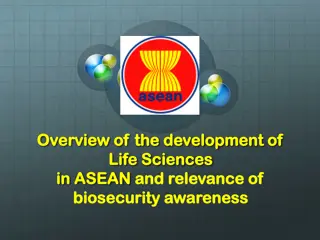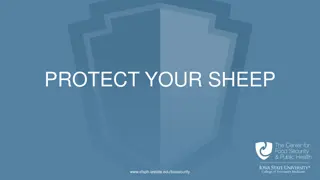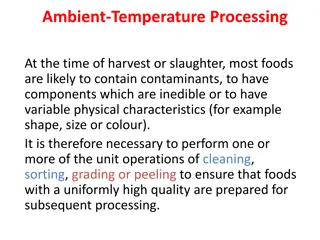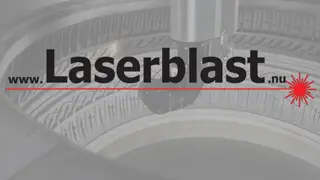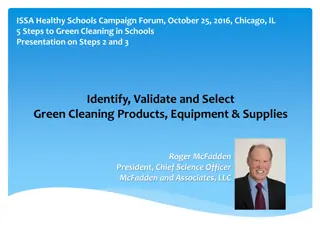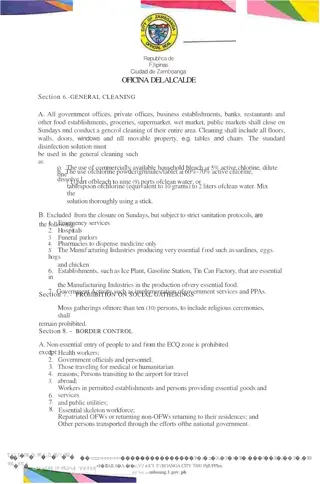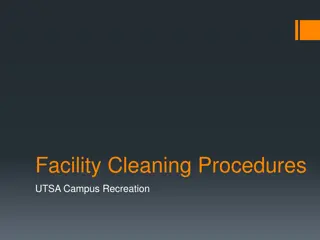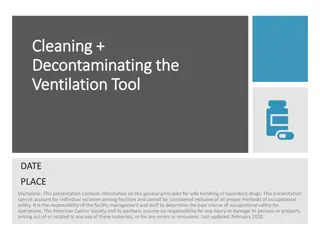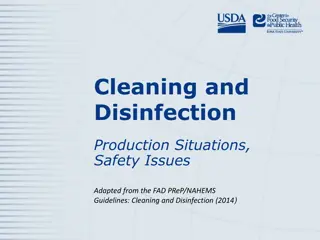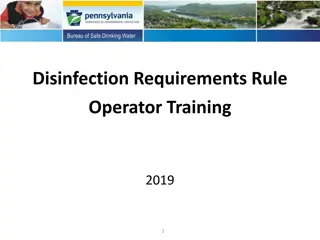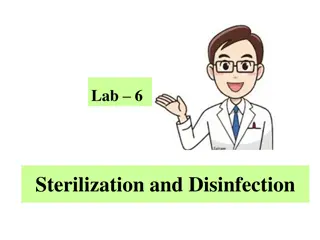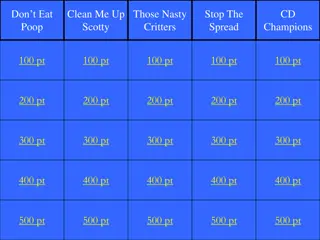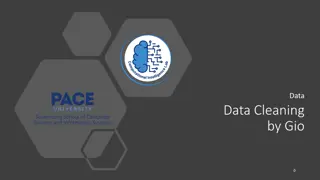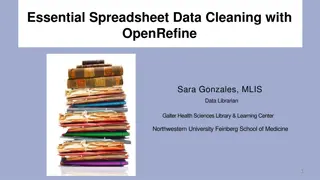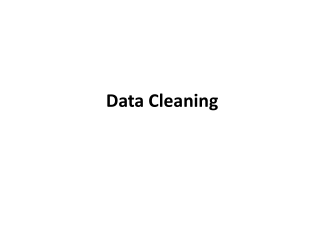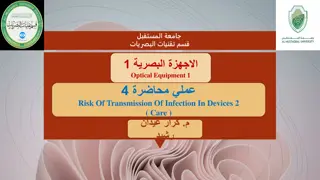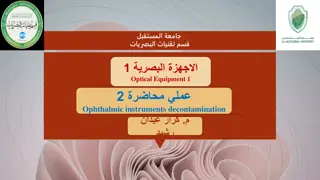Biosecurity Cleaning and Disinfection Procedures
This guide outlines biosecurity cleaning and disinfection procedures, including small-scale C&D stations, personal protective equipment protocols, personnel decontamination steps, emergency medical situation guidelines, and equipment sanitation measures. It emphasizes the importance of thorough cleaning to prevent the spread of microorganisms and maintain a safe environment.
Download Presentation

Please find below an Image/Link to download the presentation.
The content on the website is provided AS IS for your information and personal use only. It may not be sold, licensed, or shared on other websites without obtaining consent from the author. Download presentation by click this link. If you encounter any issues during the download, it is possible that the publisher has removed the file from their server.
E N D
Presentation Transcript
Cleaning and Disinfection C&D Procedures, Part 2 Adapted from the FAD PReP/NAHEMS Guidelines: Cleaning and Disinfection (2014)
Small-Scale Cleaning and Disinfection (C&D) Stations 2
Small-Scale C&D Stations Impermeable surface near entrance/exit point of premises Water supply and drainage Run-off water contained Equipment To aid in removal of gross debris Application of disinfection products Tubs, scrub brushes, etc. 3 FAD PReP/NAHEMS Guidelines: Cleaning and Disinfection-Procedures: Part 2 USDA APHIS and CFSPH
Personal Protective Equipment All PPE - disposed of or cleaned and disinfected prior to leaving premises Disposable PPE Preferred Dispose of properly Reusable PPE If waterproof - clean Apply disinfectant Spray, scrub brush, soak 4 FAD PReP/NAHEMS Guidelines: Cleaning and Disinfection-Procedures: Part 2 USDA APHIS and CFSPH
Personnel Personnel decontamination Before/after leaving premises Wash hands Warm water, antibacterial soap When leaving premises Remove disinfected PPE items Warm water, antimicrobial soaps, hand cleaners made available Clean change of clothes Privacy 5 FAD PReP/NAHEMS Guidelines: Cleaning and Disinfection-Procedures: Part 2 USDA APHIS and CFSPH
Emergency Medical Situations Serious injuries may occur Abbreviated C&D measures At minimum Spray emergency vehicles with EPA- approved disinfectant before leaving access corridor (in absence of organic matter) Emergency personnel and victim: disposable clothing or clean and disinfect clothing/boots Notify hospital authorities of risk Necessity for disinfection 6 FAD PReP/NAHEMS Guidelines: Cleaning and Disinfection-Procedures: Part 2 USDA APHIS and CFSPH
Equipment May transfer microorganisms Equipment with animal contact Items used in the care, treatment, euthanasia, and restraint Clean and disinfect, or appraise and dispose of C&D equipment Clean, disinfect, store Rubber equipment: use caution 7 FAD PReP/NAHEMS Guidelines: Cleaning and Disinfection-Procedures: Part 2 USDA APHIS and CFSPH
Electronics Place electrical equipment in airtight enclosure for fumigation Dismantle equipment when possible UV light exposure also acceptable Protect portable electronics in plastic bags during use Upon removal from premises, disinfect bag and then body of item 8 FAD PReP/NAHEMS Guidelines: Cleaning and Disinfection-Procedures: Part 2 USDA APHIS and CFSPH
Large-Scale C&D Stations 9
Large-Scale C&D Stations Vehicles, heavy machinery Livestock carriers, feed or milk trucks, carcass transporters, cars, or trucks Backhoes, bulldozers, cattle chutes Leaving the area Exterior, interior disinfection required Affected by: uneven surfaces, inclement weather conditions 10 FAD PReP/NAHEMS Guidelines: Cleaning and Disinfection-Procedures: Part 2 USDA APHIS and CFSPH
Large-Scale C&D Stations Vehicles follow basic C&D protocol Multi-step clean + disinfect Address all exterior, interior surfaces Contain, remove spent fluids from area Create berms (e.g., sandbags, straw bales), use sump pump Contain spray drift/splash via framing wall, plastic sheeting *Aircraft - only EPA-approved 11 FAD PReP/NAHEMS Guidelines: Cleaning and Disinfection-Procedures: Part 2 USDA APHIS and CFSPH
Premises 12
Premises Interior Before initiating C&D Turn off fans, identify drains and run-offs, set up footbaths Disconnect electricity to the building Acquire alternate electric supply if needed Preliminary pathogen-reduction step Highly contagious disease Apply disinfectant at low pressure 13 FAD PReP/NAHEMS Guidelines: Cleaning and Disinfection-Procedures: Part 2 USDA APHIS and CFSPH
Premises Interior Follow basic C&D protocol Clean, wash, rinse, dry, disinfect, rinse Special attention Feeding and watering equipment, other mechanical structures Sensitive equipment Thermostats, scales, clocks, light bulbs Individually wipe, clean, sanitize, and protect from damage recontamination 14 FAD PReP/NAHEMS Guidelines: Cleaning and Disinfection-Procedures: Part 2 USDA APHIS and CFSPH
Premises Exterior Immediate area surrounding exterior of animal housing Must be cleaned and disinfected Up to 10ft. around exterior Flame guns may be used Areas where no combustible materials are present Use low pressure sprayer to disinfect ventilation and fan inlets 15 FAD PReP/NAHEMS Guidelines: Cleaning and Disinfection-Procedures: Part 2 USDA APHIS and CFSPH
Vectors Non-susceptible animals may transfer pathogens Rodents Seal areas where rodents may enter Birds Address nesting sites (roof areas, eaves) Wildlife Trap or destroy feral animals Pets Bathe, control movement 16 FAD PReP/NAHEMS Guidelines: Cleaning and Disinfection-Procedures: Part 2 USDA APHIS and CFSPH
Slurry Pits Some pathogens may be transmitted via fecal material Recently emptied tanks Assess risk of disposed material Full tanks Thermal inactivation Chemical disinfection Products that alter pH Vigorous stirring: follow safety precautions 17 FAD PReP/NAHEMS Guidelines: Cleaning and Disinfection-Procedures: Part 2 USDA APHIS and CFSPH
Depopulation and Disposal Sites C&D activities must be implemented to control pathogen spread Machinery and transportation vehicles Depopulation areas Frequent disinfection Disposal sites Disinfect after all procedures completed Include areas around the site, roads, and all heavy equipment 18 FAD PReP/NAHEMS Guidelines: Cleaning and Disinfection-Procedures: Part 2 USDA APHIS and CFSPH
For More Information FAD PReP/NAHEMS Guidelines & SOP: Cleaning and Disinfection http://www.aphis.usda.gov/fadprep Cleaning and Disinfection web- based training module http://naherc.sws.iastate.edu/ 19 FAD PReP/NAHEMS Guidelines: Cleaning and Disinfection-Procedures: Part 2 USDA APHIS and CFSPH
Guidelines Content Author (CFSPH) Glenda Dvorak, DVM, MS, MPH, DACVPM Nichollette Rider, Junior Veterinary Student Reviewers (USDA) Nathan G. Birnbaum, DVM Samantha B. Floyd, Biologist 20 FAD PReP/NAHEMS Guidelines: Cleaning and Disinfection-Procedures: Part 2 USDA APHIS and CFSPH
Acknowledgments Development of this presentation was by the Center for Food Security and Public Health at Iowa State University through funding from the USDA APHIS Veterinary Services PPT Authors: Dawn Bailey, BS; Kerry Leedom Larson, DVM, MPH, PhD, DACVPM; Reviewers: Glenda Dvorak, DVM, MPH, DACVPM; Patricia Futoma, Veterinary Student; Janice Mogan, DVM


